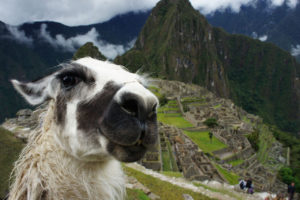
One of the animals from which the best quality wool is obtained are alpacas, the wool they produce is silky fibre, soft and durable with thermal properties. The word Alpaca comes from the Quechua “Allpaqa, paqu” and is a camelid that comes directly from the Peruvian Andes under the influence of man.
IMPORTANCE OF ALPACAS
Alpaca wool plays an important role in the textile sector, since different styles of clothing are manufactured from the fibre, it is estimated that alpaca fibre has around 30 tones, which makes it the first choice for clothing designers; moreover, due to its versatility, wool allows it to be worked for different presses, fabrics, accessories and crafts.
BREEDING
The average gestation period of an alpaca is approximately 11 months,
and they can only gestate 1 offspring per year. Their lifespan can be up to 25 years, however their productive life depends on the breeder, could be about 7 years. It is estimated that there are currently about 4 million alpacas in L
temperatures from -20°C to 30°C in a single day, with a special low-protein diet based on natural pastures.
In Peru, 80% of alpaca breeding is in the hands of peasant communities and each community has an average of 50 alpacas, who with the production of alpaca fiber and meat, have the opportunity to ensure their livelihood.
TYPES OF ALPACA
In Peru, there are two types of alpacas
- Huacaya, represents 80% of the population, its dense fiber and perfect formation.
HUACAYA - Suri, make up approximately 12% and its fiber is lacia, measuring 25 to 30 centimeters long.
SURI
It is estimated that 8% of the remaining population are the result of crossing between the two types of alpaca mentioned above.
WHY DOES THE ALPACA SPIT?
When they feel distressed, uncomfortable or threatened, they tend to spit as a defense mechanism, their intention is not to attack but they do it as a warning sign to their “enemy”. Sometimes they spit on each other when they are competing for food or trying to establish dominance.
IS ALPACA EDIBLE?
Alpaca meat is one of the meats with the lowest percentage of fat that exists and is part of the most exquisite dishes of Peruvian cuisine, the most popular dishes are: alpaca skewer, alpaca marinade, alpaca with quinoa and ratatouille, alpaca casserole, alpaca stew, alpaca encebollada, alpaca saltado loin and alpaca lomo anticucho.
Do you want to know more about the world of alpacas? Contact us at Eric Adventures